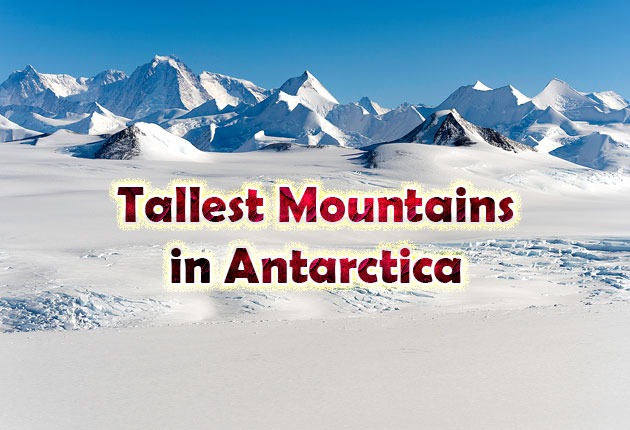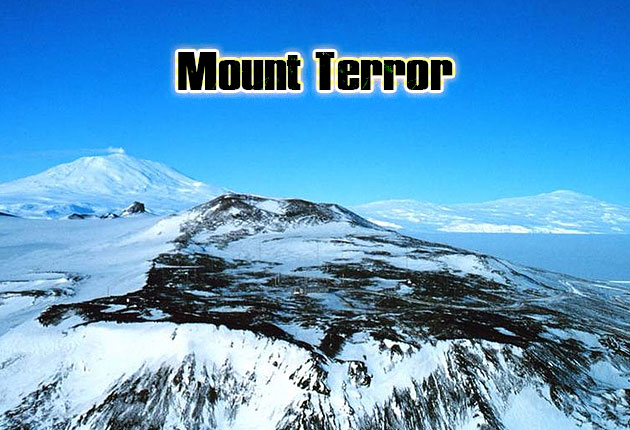Antarctica is the coldest continent on Earth. For sure, all its highest peaks would be some degrees below zero and the view from most summits is white snow everywhere. If there would be someone who has climbed all of them, he or she is would be the coolest mountaineer in the world.
Here are the top ten tallest mountains in Antarctica:
1. Mount Vinson
With an ultra-prominent peak of 4,892 meters, Mount Vinson is the highest mountain in Antarctica and the sixth highest of the seven summits. It can be found in the north part of Vinson Massif’s summit plateau. Meanwhile, Vinson Massif lies in the Sentinel Range, which is part of the Ellsworth Mountains near the Ronne Ice Shelf south of the Antarctic Peninsula.
Antarctic explorer Lincoln Ellsworth, together with Hubert Hollick-Kenyon, first noted the Vinson Massif during their first transcontinental flight across Antarctica in November 1935 while aboard the Polar Star airplane. During the flight, they saw a solitary little range, which they named the Sentinel Range. However, the higher summits including Mount Vinson was hidden by thick clouds.
Mount Vinson was only discovered during a reconnaissance flight by the US Navy pilots in December 1957. The mountain got its name from Carl Vinson, a Georgia congressman and a former chairman of the House Armed Services Committee who supported the exploration of Antarctica. By the next year until 1961, several ground and aerial surveys tried to determine the heights of all the major peaks in the Ellsworth Mountains. Mount Vinson was originally surveyed at an elevation of 5,140 meters. The first ascent at the peak of the mountain was led by two groups within the American Alpine Club and a group led by Peter Schoening of Seattle, Washington.
2. Mount Tyree
The second highest mountain in the icy continent is Mount Tyree, with a peak of 4,852 meters. It is located 13 kilometers northwest of the Vinson Massif. It is one of the most recently discovered high mountains in the world, were first spotted in January 1958 by aerial explorers of the US Navy’s Air Development Squadron 6. The mountain was named after Rear Admiral David M. Tyree, who oversaw the US Naval Support Force in Antarctica from 1959 to 1962.
In 1967, Mount Tyree met the first mountaineers who reached its summit – American mountaineers John Evans and Barry Corbe. As of January 2017, the peak had only been reached six times.
3. Mount Kirkpatrick
Mount Kirkpatrick, a mostly ice-free mountain, is the highest peak that can be found in the continent’s Queen Alexandra Range. It is the third tallest mountain in Antarctica with an elevation of 4,528 meters. This mountain was also known as Mount Kilpatrick and was named by the British Antarctic Expedition who explored the area in 1907 to 1909 after a Glasgow businessman who supported the expedition.
Mount Kirkpatrick is known in the world of paleontology as a location for the most important fossil sites in Antarctica. Dubbed as the “Dinosaur Mountain,” it is where a 25-foot long Cryolophosaurus skeleton and an almost complete skeleton of a young Prosauropod was found. These fossils and many other skeletal finds will be featured on the Field Museum traveling exhibit that will be launched in 2018.
4. Mount Markham
In the north end of Antarctica’s Markham Plateau lies Mount Markham, with the highest peak elevated at 4,350 meters.
This mountain was one of the discoveries of the first group to organize Antarctic expeditions, the British National Antarctic Expedition, who explored in 1901 to 1904. Mount Markham was named after Sir Clements Markham, the president of the Royal Geographical Society who planned the expedition. Markham chose Robert Falcon Scott, a protégé with no polar experience. He led the Discovery expedition to carry out scientific work, but he also marched south with some of his men within 410 miles of the Pole and set a new record. Scott became popular in British media for setting foot in seemingly unconquerable lands and bravely conquering the harsh environment in the South Pole.
5. Dome A
Also called Dome Argus, it is the loftiest ice dome to be found on the Antarctic Plateau with a height of 4,093 meters. The name, which was grabbed from Greek mythology by the Scott Polar Research Institute, is from Argus who built a ship that traveled to Colchis in search of the Golden Fleece.
The Dome A is one of the driest locations on Earth. Because of that, it is where scientists can access terahertz radiation, a type of light that has frequencies higher than 1 trillion hertz – a thousand times greater than frequencies used by cell phones. Water vapor in the planet’s atmosphere absorbs this radiation, so scientists have relied on space missions to find information about the stars and galaxies.
Dome A offers a natural laboratory for studying the effects of water vapor on atmospheric absorption on places with extremely low temperatures. It is seen by scientists as a potential location for conducting scientific research.
6. Mount Fridtjof Nansen
Mount Fridtjof Nansen is located to the east of the Liv Glacier. At 4,070 meters, this towering massif dominates the area between the heads of Axel Heiberg Glaciers and Strom in the Queen Maud Mountains of Antarctica. It was discovered by Norwegian polar explorer Roald Amundsen in 1911 and named it after Fridtjof Nansen, another polar explorer from his nation who helped support Amundsen’s expedition.
7. Mount Erebus
Mount Erebus, with an elevation of 3,794 meters, is the most southern volcano in the world. It is one of the Earth’s most remote and spectacular volcanoes, as it rises above Ross Island in Antarctica. This volcano is continually active since it was first discovered in 1841 by polar explorer Sir James Clark Ross and is actually the most active volcano in the icy continent. Surrounded by lava lakes that amazingly held liquid magma for thousands of years despite the freezing cold temperatures, Mount Erebus is one of the five persistent lava lakes in our planet. Scientists have discovered that it was active since 1.3 million years ago.
The volcano was notable for its numerous ice towers that form around gases that escape from vents in the surface. Life here is very sparse – only some bacteria and fungi can survive. This makes oligotrophs, the organisms that can survive in minimal amounts of resources, interesting to study for scientists.
Discoverer Ross named Mount Erebus after Erebus in Greek mythology, which was the dark region in Hades.
8. Mount McClintock
The eight highest peak in Antarctica, Mount McClintock is 3,490 meters high. It can be found in the Britannia Range in the Australian Antarctic Territory. It was considered by some as the highest mountain on the continent, including all external territories.
Mount McClintock as named after Admiral Sir Leopold McClintock of the Royal Navy and the British National Antarctic Expedition. He was a member of the Ship Committee for their journey on the mountain. McClintock was a master of using human hauled sleds in traveling Antarctica, which was the standard in Antarctic overland travel and the Royal Navy Arctic until the death of Robert Falcon Scott.
9. Mount Terror
This haplessly named body of land is a large shield volcano forming the eastern part of Ross Island in Antarctica that is 3,262 meters high. Mount Terror is the largest of the four volcanoes in Ross Island and is 30 kilometers to the west near Mount Erebus. Interestingly, it’s not as terrifying as Erebus and is not the home of Terror Point, Terror Saddle and Terror Glacier – these were named as such due to their proximity to the volcano. This volcano was also named by Sir James Clark Ross in his 1841 expedition, from his second ship HMS Terror, which was lost while exploring the pole opposite Antarctica’s. The captain of the lost ship was a close friend to Ross.
The rocks at the summit of Mount Terror were not yet studied, but rocks from lower areas were dated to be as old as 0.82 to 1.75 million years. This means that the volcano had no signs of activity more recent than that. The first exploration to climb Mount Terror was done in 1959 by New Zealanders.
10. Mount Jackson
The highest mountain in the Antarctic Peninsula, Mount Jackson stands in its southern part with an elevation of 3,184 meters. It can be found in Palmer Land within the Antarctic territories of the United Kingdom, Argentina, and Chile.
The mountain was originally named Mount Ernest Gruening, the Governor of the Alaska Territory at time of discovery when it was surveyed by the United States Antarctic Service (USAS) in 1940. Its initial height was measured at 4,200 meters. USAS changed the name later to Mount Jackson for Andrew Jackson, the seventh president of the United States. Jackson was the president who authorized the United States Exploring Expedition of 1838 to 1842. The expedition that led to the discovery of this mountain was led by Lieutenant Charles Wilkes of the US Navy. He also led exploration and surveying of the Pacific Ocean and its other surrounding lands beside Antarctica.
Antartica has some amazing mountains! Check out this infographic from IlluminatingFacts.com of the tallest mountains in the world.





